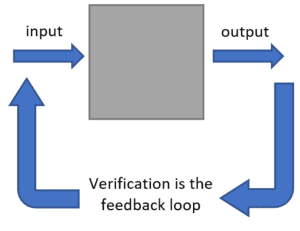Verification and Validation
These two words sound the same, and seem like they could mean the same thing, but they have different meanings. API Q1, Specification for Quality Management System Requirements for Manufacturing Organizations for the Petroleum and Natural Gas Industry, has sections and definitions on both validation and verification. API 7K also talks about these two words frequently. So what exactly does API (American Petroleum Institute) mean when they talk about validation and verification?
Much literature and articles in the auditing, quality management, ISO 9000, ISO 9001 and API Q1 community all seem to say the same thing, “Verification and validation are probably the most misunderstood and misused terms of them all.”
We can see why they are confusing. The wording in the specification itself is kind of vague and ambiguous. They don’t really give any specific examples, there’s nothing to grab on to. The people in the oil & gas industry are the ones who apply the theory to make something out of nothing, to change the world for the better. They do it day in and day out, well into the night, and burn that midnight oil.
Auditors frequently contrast verification and validation with the following:
Validation – Are we building the right tool?
Is it the right tool for the customer, for the industry, for the job? A tool could be very well designed, but if it’s not the correct one, if it doesn’t meet the customer’s needs, it wouldn’t, and shouldn’t be validated by top management and/or the end user.
Verification – Are we building the tool right?
Using engineering and design, is the organization building the tool strong enough? Does it have the right dimensions? Will it fail by buckling, fatigue, yielding, etc.? Do the geometries and material properties created by the design process (design outputs) interact in a way that makes the tool meet the specified the strength requirements (design inputs)? This is the essence of verification, checking design outputs against design input requirements. The figure below represents a simple example of this concept. Any process can be represented by the gray box with an input and an output.

Summary of Differences
| Validation | Verification |
| Demonstrates conformity of product to requirements (before delivery of product but sometimes after) | Determines conformity of product to requirements (in a mathematical sense) |
| Field tests (out on the rig) | Lab Tests (like with scientists and stuff) |
| Ensures final product is capable of meeting specified requirements (industry needs and standards, customer needs) | Ensures design inputs have been met by outputs |
| Has to do with making sure final product meets customer needs | Has to do with making sure final product is well engineered, well designed, error free, etc. |